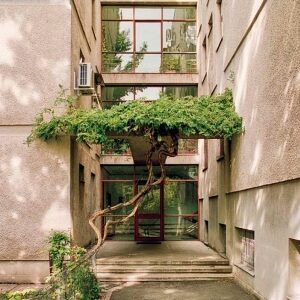Imitate: Buildings Inspired By Nature
By Catarina Wilk
What do creativity and science have in common? A lot! You will be surprised…
You definitely have heard about Leonardo Fibonacci’s famous Fibonacci sequence which is also known as the Golden Ratio. In short, the Fibonacci numbers are nature’s general numbering system. By closer inspection, you definitely have recognised that plants or other natural phenomenons show a specific system in the way they grow. Think of a beautiful sunflower, the scale of a pineapple or even a snail shell, all of them show different patterns and therefore, show the Fibonacci sequence in their arrangement of leaves and seeds, petals or on their surface in general.
Not only scientists and mathematicians, but also designers and artists are fascinated by this
scientific phenomenon and take it into account for their creative works. As you might know, nature and its beautiful treasures have always been and still are a source of inspiration for many creative processes in various fields.
In this particular case, we have a closer look at architectural buildings who imitate these kind of natural structures that can be detected in our natural world.
To start off, the famous Lotus Temple in New Delhi (India) is a perfect example of how architects literally turn flowers or plants into impressive buildings.
As the name already suggests, the building itself is shaped in a specific way and thus reminds us of a beautiful lotus flower. Due to its unique shape, the Lotus Temple has won numerous architectural awards such as the GlobArt Academy award in 2000.
The spectacular Leaf House located in Angra dos Reis (Brazil) is another great example of how the Fibonacci sequence in nature inspires architects all around the world. Designed by Mareines + Patalano, the building’s roof is leaf-shaped and therefore, reminds of a giant plant from the bird’s eye perspective.
Not only buildings, but also sculptures are inspired by nature. The sculpture below called
‘Evolver’ “is a sculpture erected to view the panorama surrounding Zermatt, Switzerland. It was designed and built in wood by a team of 2nd year architecture students from the ALICE studio at EPFL in Lausanne. On first sight, the sculpture seems to be a normal sculpture, but if you have a closer look, you can definitely see that it bears a resemblance to a snail shell.
As you can see, our world is full of beauty and inspires people in various different ways. Open your eyes and explore nature’s beautiful world!










